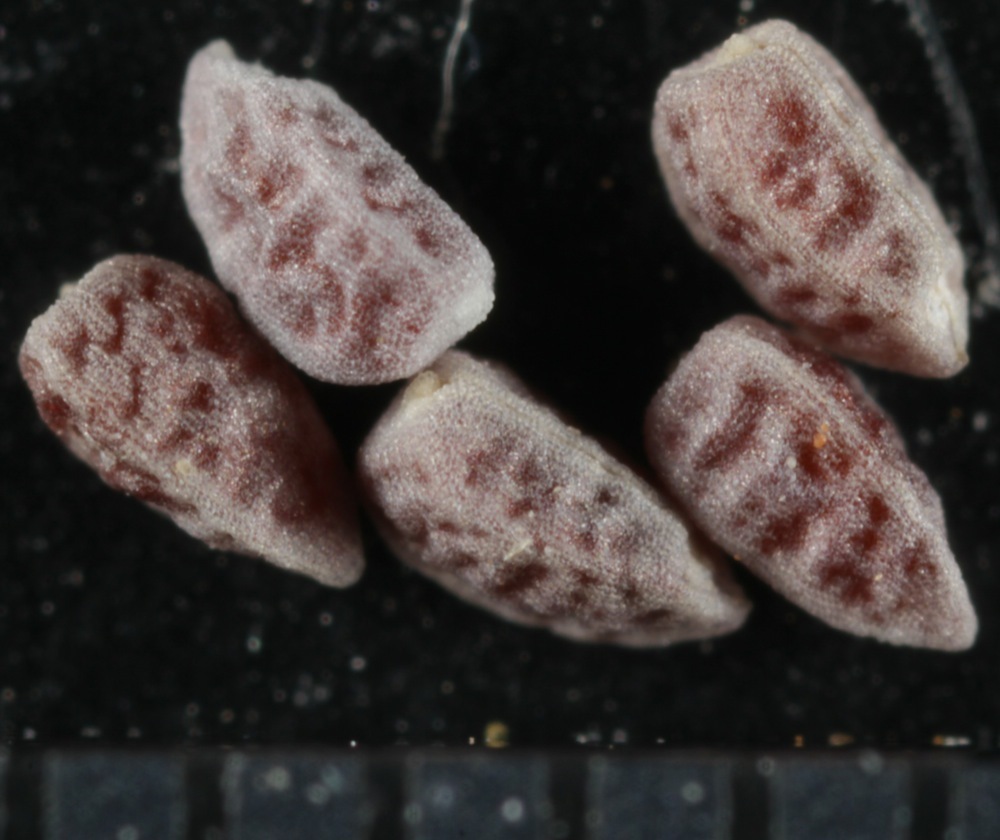Advanced Seed Morphology
Seed morphology is very important to the taxonomy of the genus Euphorbia. It is so important that most larger keys require looking at the seeds. The seeds are so diagnostic that there are many instances where species can be determined just by looking at the seeds alone. Because of this, I think it's time that I write a little bit about the more complicated aspects of Euphorbia seed morphology. This does not cover the full variability of seed morphology but is intended to give an introduction to help you understand the terminology.
In almost every Euphorbia seed, there are four more or less flat sides (referred to here as faces). Two of these are generally longer than the other two as shown below.

These are useful for identification, but in order to understand the morphology of the seeds, there are some other characteristics that should be taken into account. First off, the faces are best identified in their relationship to the four angles. Look at the figures below.


Left and Right: A: distal angle (angle furthest from center of fruit); B: lateral angles; C: proximal angle (angle nearest center of fruit; also called the raphe). Left only: D: testa (seed coat); E: mucilaginous coat (only the white part). Right only: D: chalazal end; E: hilum (micropyle visible as brown dot directly right of hilum).
The two faces adjacent to the distal angle are known as distal faces. The two angles adjacent to the proximal angle are known as proximal faces. There is considerable variation in these faces between species. In some, the faces bulge so much or the angles compress so much that the faces are nearly indistinguishable from the angles and the seeds become essentially round in cross-section. In some, these faces are compressed and create somewhat deep depressions between the angles. The topography of the angles varies too. They may be ridged, wrinkled, pitted, papillate, or have some variation of these. In some species, it is important to know whether the ridges overlap the angles. Some have sharper ridges than others.
Aside from faces and angles, the figures above also identify the testa (the seed coat), the mucilaginous coat (the part that makes the coat slimy/sticky when wet), the chalazal end (defined as the end of the raphe opposite to the hilum), the hilum (place where the seed was attached to the fruit), and the micropyle (place where the pollen entered into the ovule during fertilization). Many of these exhibit variability between species that make them diagnostic. A characteristic not shown in the above figure is a caruncle (an outgrowth of the hilum), which can be useful for identification.
Examples:

Euphorbia carunculata with an outgrowth of the micropyle. Source observation.

Euphorbia lata showing connections between hilum, micropyle, and fruit tissue. Source observation.

Euphorbia alta seed with caruncle. Source observation.


Euphorbia roemeriana displaying caruncle and enlarged chalaza. Source observation.





Seeds of various species showing diversity in ridges. Top left: E. serrula; top right: E. simulans; bottom left: E. prostrata; bottom center: E. glyptosperma; bottom right: Euphorbia theriaca var. theriaca.




Comentarios
Yet another masterful journal entry.
@suz @gcwarbler @anewman @bob777
As always, amazing! Thanks for your outstanding work, Nathan.
@ellen5
@jmausmus
Thanks again guys!
@jaykeller here's the post I was texting you about.
@nathantaylor Excellent photos and explanation of the seed morphology!
Agregar un comentario